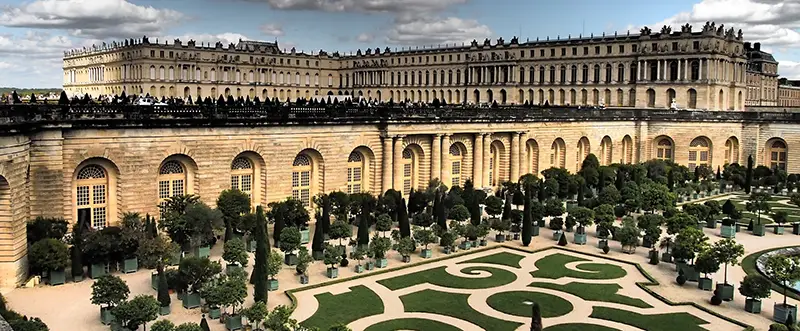Difference between Classical and Contemporary Theater
The theater is considered as the 6ᵉ art. It is a more or less realistic representation of a drama or comedy that aims to convey a message and emotions through acting.
I guess you are curious to know the differences between a so-called classical and contemporary play. You will find in this article important information on each of them to help you improve your knowledge on the subject.
The main difference between classical and contemporary theater is their structure. Classical theater follows a very precise pattern (units of time, action and place), while contemporary theater leaves more freedom to the director.
Obviously, there are other differences that we will see in detail in the rest of this article, in particular on how to move on stage, how to carry one’s voice or how to play with the audience.
Classical theater
Définition
A type of theater which relies upon imagination (and therefore limited props) to convey the setting and atmosphere of the play. Classical theater usually contains lofty, grand prose or free verse dialogue.
TheatreCrafts
The scenic setting
“May in one day, in one place, a single accomplished fact, hold until the end the theater filled”, these verses by Boileau summarize the goal of the scenic expression of a theatrical play of the classical period.
There must be a single, unique place in which the action will take place throughout the play. It can be a room in Louis XIV’s castle, a country house or a maid’s room, it should not be changed so as not to distract the spectator’s attention.

It will also require the same time frame, 24 hours to be precise. All the action will have to take place within this time frame. Not a minute longer. The text must follow the course of the day from sunrise to sunset.
Finally, the stage setting for a classic play requires unity of action. The text must have a single great plot, and the audience must be waiting for the end of the play to come to an end.
The Authors
With the famous Britannicus or even Phèdre, Jean Racine, French playwright and poet, he is the one who best represents this type of theater. Le Cid will also mark its time, its author Pierre Corneille is a recognized author of the classical period of the 17th century.
Purpose
Comedy and tragedy are the two main themes of classical theater.
To bring the best emotions to life, the director must direct their actors in such a way as to stay within the framework of the original text, helped by the didascalies which are an important source of information offering indications on how to stand, dress the actors or move on the stage.
There is little or no interaction with the audience, it is a show that is watched through a story accompanied by a thrilling plot.
Contemporary theater
Definition
Contemporary Theater can involve all types of text, objects, music, costumes, lighting, image, sound, sets, and vocal expression.
FindMyAnswer
The scenic setting
Unlike its classical counterpart, contemporary theater does not have pre-established stage rules. And that is the goal. Creativity is at the center of the research to bring the text to life in an offbeat and lively way for the spectator.
The contemporary is a show, we come to experience strong emotions. It’s art, the personality of each theater actor allows to set up remarkable and unique plays. With the support of new technologies, contemporary theater in the XXIᵉ century uses high-performance lighting and sound equipment to enhance the audience’s experience.
The authors
With her famous “Les Pas perdus”, French actress Denise Bonal is one of the most recognized contemporary figures of her generation.
We can also quote Wajdi Mouawad, Lebanese director and his famous “Scorched” written in 2003 or Olivier Py and the Comic Illusions which puts in text a drama under a farce background.
Purpose
In a room from the XXᵉ century, we will try to jostle the public, to talk to them, to challenge them. It is sometimes possible to leave the light in the room on so that we can interact with the audience directly, make them feel uncomfortable or, on the contrary, make them feel part of the play, like a full-fledged actor.
The spectator’s place is completely reinvented, more alive, the show then becomes much more engaging for him/her.
Differences between classical and contemporary theater
We can note many points in common, but also points that oppose the two styles.
Objective
The time to begin with, it is obvious that the authors have evolved in their way of writing and this can be felt in their play. A classic text will tend to tell a story with a beautiful plot, while the contemporary text will want to denounce, shock, open the debate.
Interactions with the spectator
This is one of the significant differences here, classical theater does not interact with the audience whereas the contemporary will want to jostle the spectator, make him participate in the play.
To conclude, it is important to emphasize that theater is an art in which the text is the main actor. The way it is played may be different, but the final interpretation is up to the reader who, through his personal experience and emotions, will make it his own artistic approach.
Comparison table
| Classical theater | Contemporary theater |
| The objective is mainly to tell a beautiful story. | The main objective is to get the public to react, often by opening a debate. |
| No interaction with the public | The spectator is an integral part of the representation |
| Strict framework to be respected: short period, place and unique history. | No rules |
| 17th century | 20th century |






